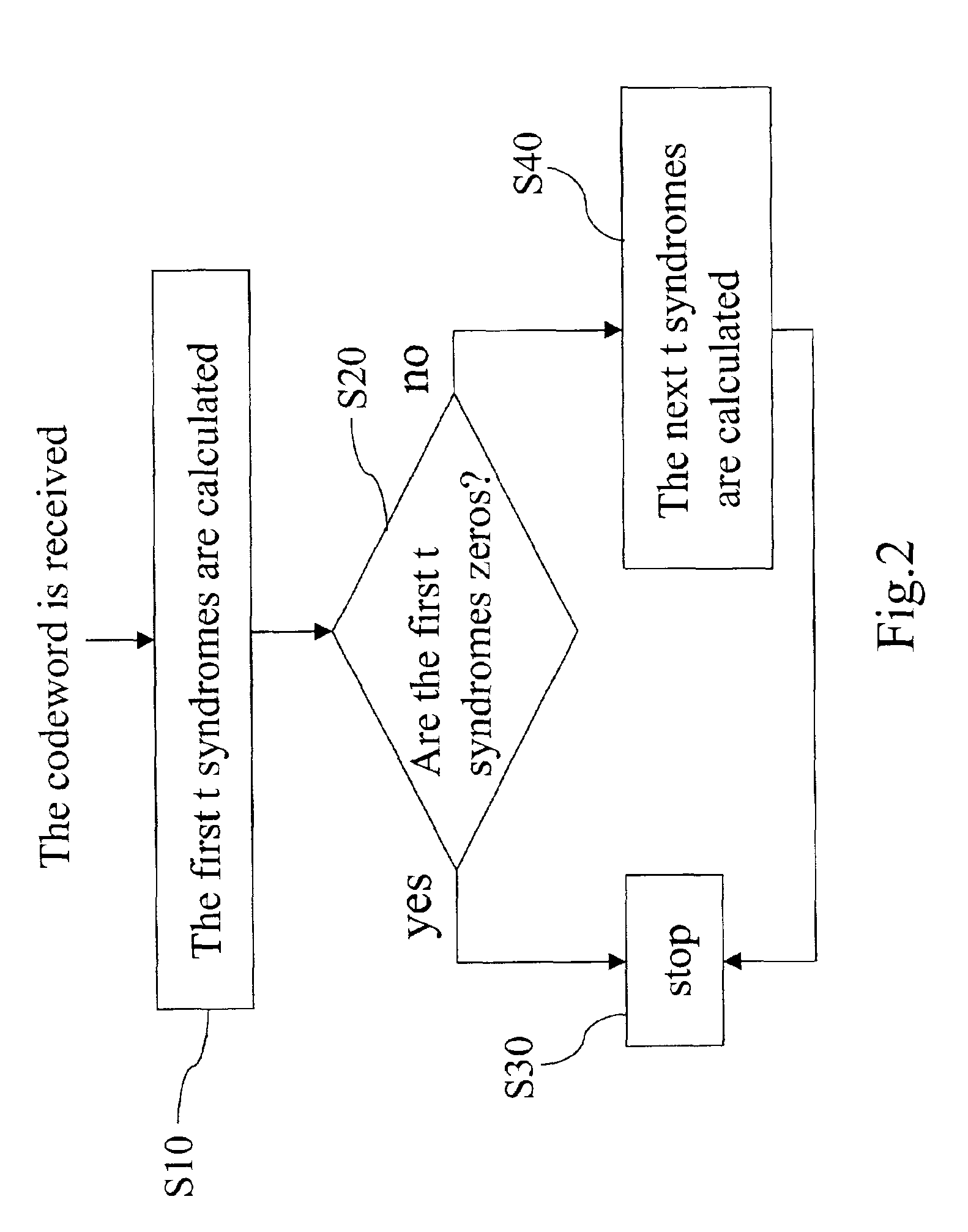Method for calculating syndrome polynomial in decoding error correction codes
a technology of error correction codes and syndrome polynomials, applied in the field of method for calculating the syndrome polynomial, can solve the problems of waste of needless power consumption in calculating the whole syndrome polynomial, errors in transmitted data, etc., and achieve the effect of reducing the computation of circuits in practical operation and reducing power consumption
- Summary
- Abstract
- Description
- Claims
- Application Information
AI Technical Summary
Benefits of technology
Problems solved by technology
Method used
Image
Examples
Embodiment Construction
[0012]The RS code is one of widely adopted error correction codes in digital communications and data storage systems. It has a very high detection and correction capacity for multiple errors. If the received codeword contains no errors, it can be shown that all syndromes (S1˜S2t) will all equal zeros. In the conventional design, it is necessary to calculate 2t syndromes no matter whether the received codeword is erroneous. However, from the relation between the syndromes and the coefficients of the error locator polynomial, if the first t syndromes S1˜St are zeros, the next t syndromes St+1˜S2t are also zeros. Therefore, in judging whether the received codeword is erroneous, it is only necessary to calculate the first t syndromes.
[0013]FIG. 2 shows a method of calculating the syndrome polynomial in decoding the received codeword processed by error correction codes in the present invention. The method comprises the following steps. First, a syndrome calculator is used to calculate th...
PUM
 Login to View More
Login to View More Abstract
Description
Claims
Application Information
 Login to View More
Login to View More - R&D
- Intellectual Property
- Life Sciences
- Materials
- Tech Scout
- Unparalleled Data Quality
- Higher Quality Content
- 60% Fewer Hallucinations
Browse by: Latest US Patents, China's latest patents, Technical Efficacy Thesaurus, Application Domain, Technology Topic, Popular Technical Reports.
© 2025 PatSnap. All rights reserved.Legal|Privacy policy|Modern Slavery Act Transparency Statement|Sitemap|About US| Contact US: help@patsnap.com



